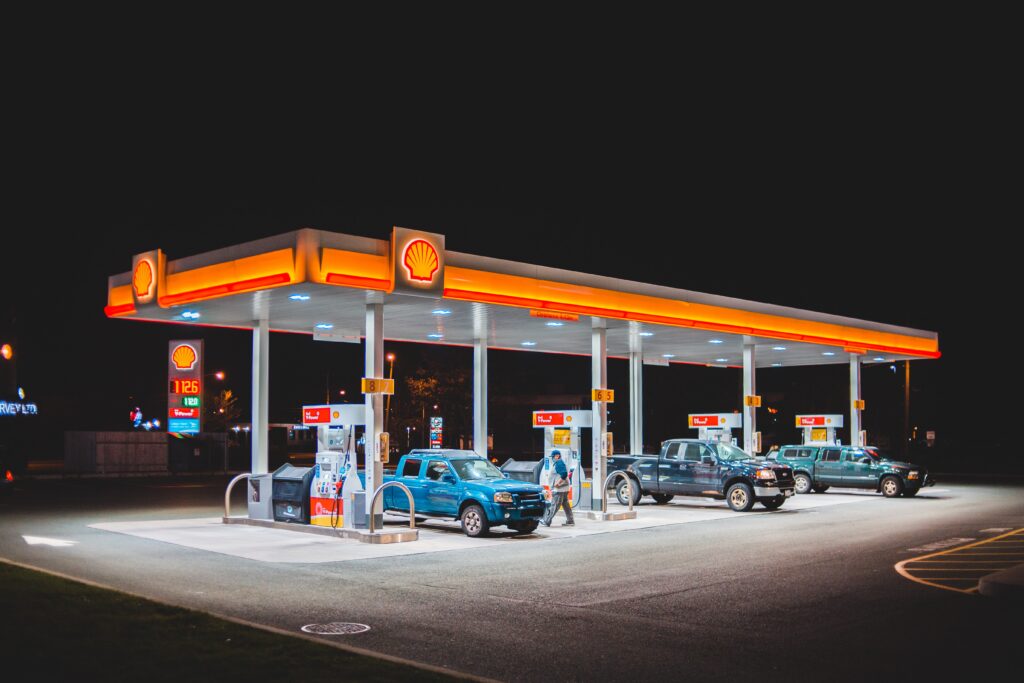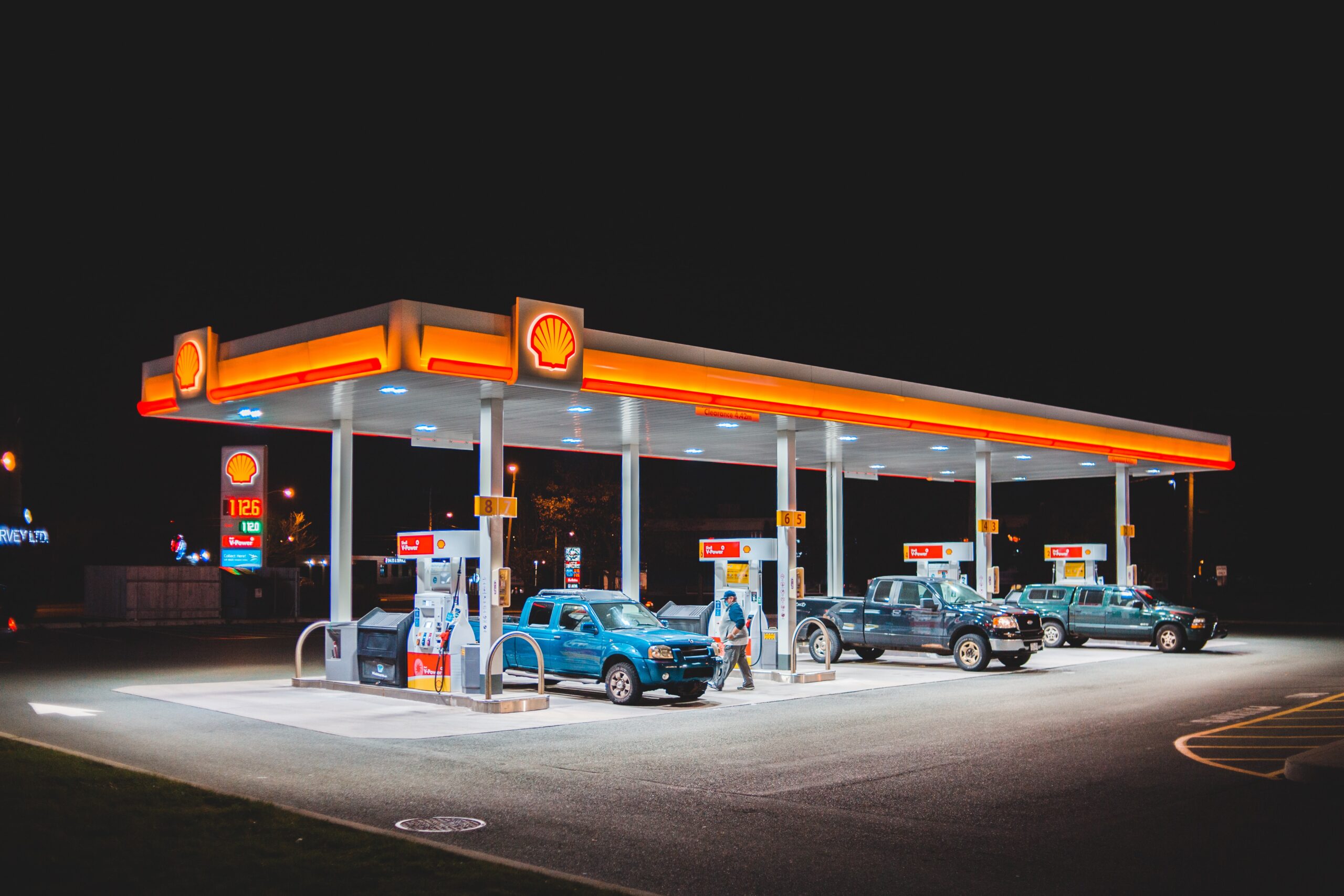
How is gasoline consumption changing in the United States? While we are increasing the fuel efficiency in our vehicles, surely the consumption of gasoline per person is going down, right?
I went looking for data to check my assumption that gasoline consumption is increasing over time in the USA (it is), but then I wondered if the increase is related to the population increasing. The final question I had is whether the amount of fuel used per person in the USA shows any evidence of changing over time.
It turns out that the amount of gasoline consumed by each person in the USA has remained pretty close to constant at around 565 gallons of gas per person per year since 1990 when my data set begins.
To the data!
Data Set
If you want to follow along with the analysis, you can find spreadsheet here (ODS, CSV). The statistics about gasoline consumption come from the Highway Statistics publication of the Office of Highway Policy Information within the Federal Highway Administration (part of the US Dept of Transportation). This publication has been assembled annually since 1946 and Table MF-21 (Motor-Fuel Use) has been reported since at least 1990.
Consumption per year
According to the data set, the US used 185 BILLION (185×1012) gallons of gasoline in 2021. The amount of gas appears to be increasing largely linearly. A simple linear regression captures 78% of the variance.
You can clearly see the effect of COVID-19 on gasoline consumption and the effect of recovery in 2021. I can’t wait until the 2022 data are published. So, it would appear that as time goes on, barring future pandemics, we’d expect to see consumption increase pretty steadily (time will, of course, tell).
If you’re not a statistics nerd, skip to the next section, if you are, welcome to my club. Is that slope positive? Yes, we must reject the hypothesis that the slope is 0 (P < 0.001, N = 32 years).
> data <- read.csv('https://docs.google.com/spreadsheets/d/e/2PACX-1vRt9Mp-HynoCNKbjiuWQpz4Vgo8kGzjwiWdkwVeEVaBUGmN0TkBkhtlHiWm75x0hmhvJwiQOvBrdib-/pub?output=csv')
> summary(lm(Gasoline..TOTAL.CONSUMPTION...thousands.of.gallons ~ Year, data=data))
Call:
lm(formula = Gasoline..TOTAL.CONSUMPTION...thousands.of.gallons ~
Year, data = data)
Residuals:
Min 1Q Median 3Q Max
-20770332 -5902810 -512616 6149382 13183475
Coefficients:
Estimate Std. Error t value Pr(>|t|)
(Intercept) -2.973e+09 3.031e+08 -9.808 7.18e-11 ***
Year 1.566e+06 1.512e+05 10.361 1.99e-11 ***
---
Signif. codes: 0 ‘***’ 0.001 ‘**’ 0.01 ‘*’ 0.05 ‘.’ 0.1 ‘ ’ 1
Residual standard error: 7895000 on 30 degrees of freedom
(23 observations deleted due to missingness)
Multiple R-squared: 0.7816, Adjusted R-squared: 0.7743
F-statistic: 107.4 on 1 and 30 DF, p-value: 1.99e-11
Consumption as a function of population
Maybe the variance in gasoline consumption can be better explained as a function of population? i.e. if the population is higher we use more gasoline. Let’s look at the chart.
Ok, yes, as the population increases, it’s reasonable to assume that gasoline consumption increases as well (p < 0.001). In fact, the trendline for this chart captures 82% of the variance (R2). It’s not surprising that this graph and the one above (consumption by year) look largely the same: the US population is increasing at a rate of between low of 0.31% in 2021 and 1.44% in 1992 (the data set covers 1990 to 2021).
Here’s the statistical analysis:
> summary(lm(Gasoline..TOTAL.CONSUMPTION...thousands.of.gallons ~ population..1., data=data))
Call:
lm(formula = Gasoline..TOTAL.CONSUMPTION...thousands.of.gallons ~
population..1., data = data)
Residuals:
Min 1Q Median 3Q Max
-19582324 -4678776 -855852 5477186 12389183
Coefficients:
Estimate Std. Error t value Pr(>|t|)
(Intercept) 4.625e+06 1.406e+07 0.329 0.744
population..1. 5.495e-01 4.718e-02 11.646 1.17e-12 ***
---
Signif. codes: 0 ‘***’ 0.001 ‘**’ 0.01 ‘*’ 0.05 ‘.’ 0.1 ‘ ’ 1
Residual standard error: 7189000 on 30 degrees of freedom
(23 observations deleted due to missingness)
Multiple R-squared: 0.8189, Adjusted R-squared: 0.8128
F-statistic: 135.6 on 1 and 30 DF, p-value: 1.175e-12
Gasoline Consumption per Person
This was the surprising result for me. Here’s the question: are we, as a population, increasing our usage of gasoline or not? It turns out that we cannot say the our per person consumption of gasoline is changing over time. It would appear that our national gasoline usage per person is pretty constant between 1990 and 2021 at 565 gallons per person on average (standard deviation of 23 gallons).
In this case, the null hypothesis is that the slope of the regression line is 0 and we fail to reject this hypothesis (p = 0.79, SD = 23.7). We cannot conclude that the consumption per person is changing linearly with time (positively or negatively).
> data <- read.csv('https://docs.google.com/spreadsheets/d/e/2PACX-1vRt9Mp-HynoCNKbjiuWQpz4Vgo8kGzjwiWdkwVeEVaBUGmN0TkBkhtlHiWm75x0hmhvJwiQOvBrdib-/pub?output=csv')
> data = subset(data, data$Year != "")
> summary(lm(Gallons.person ~ Year, data=data))
Call:
lm(formula = Gallons.person ~ Year, data = data)
Residuals:
Min 1Q Median 3Q Max
-58.346 -15.879 -2.724 19.444 42.108
Coefficients:
Estimate Std. Error t value Pr(>|t|)
(Intercept) 809.6915 923.4243 0.877 0.388
Year -0.1220 0.4604 -0.265 0.793
Residual standard error: 24.05 on 30 degrees of freedom
Multiple R-squared: 0.002334, Adjusted R-squared: -0.03092
F-statistic: 0.07017 on 1 and 30 DF, p-value: 0.7929
Discussion
As the US population grows, it seems likely that we will continue to consume ever more gasoline. The effects of climate change are pretty clear these days, but there isn’t any evidence, yet, that Americans are changing their gasoline consumption behaviors.
Car manufacturers are making strides in creating more fuel efficient cars, but the effect of that would appear to mean we are using that increased fuel efficiency to drive ever further keeping the consumption per person constant over the study period.
Conclusion
Comments on my analysis methods and data sets are welcome. My statistics are a little rusty, but I feel pretty confident in my analysis. Let me know where I’ve got it wrong. Btw, if you’re curious, I’ve collected the covers of all of the Highway Statistics books that I could find here.
Image credit: Erik Mclean (Unsplash)

Leave a Reply